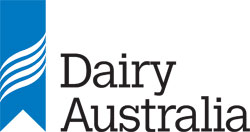Pastures And Climate Extremes Facility (Meat & Livestock Australia and Dairy Australia)
Last Updated: 6 months ago
Shortlink to this page: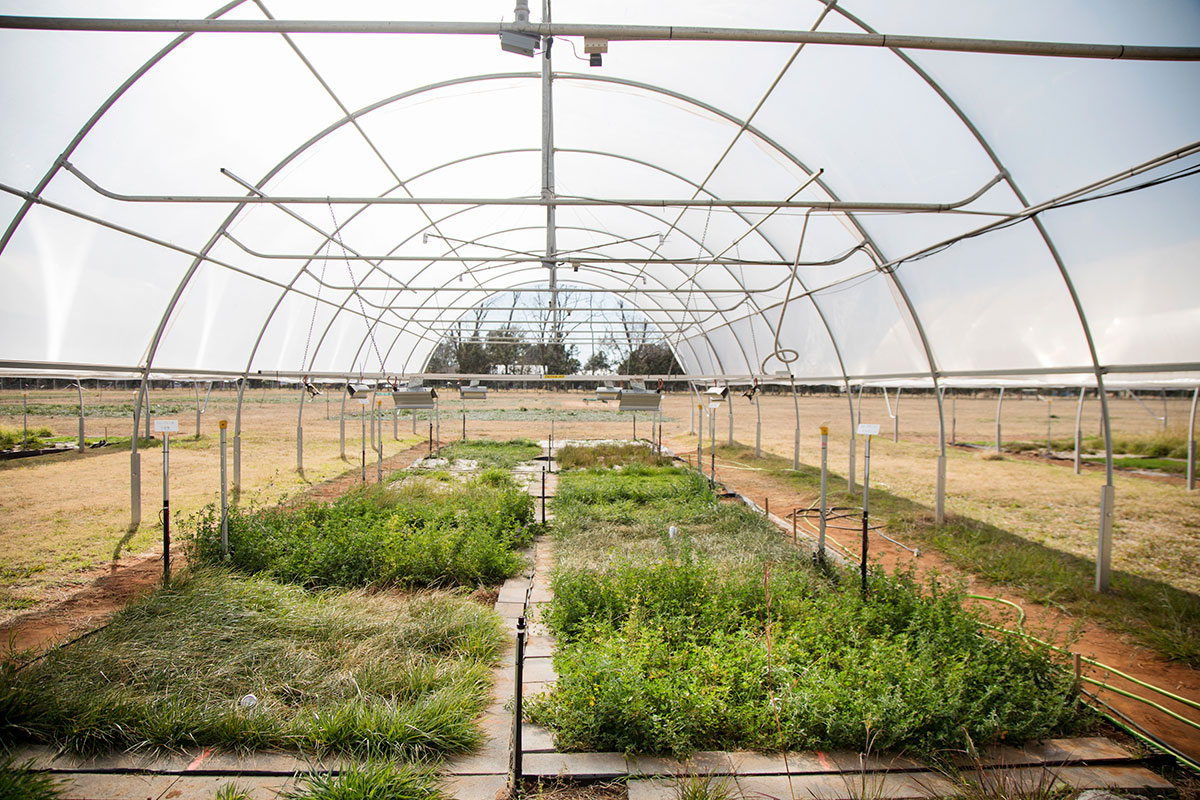
Setup: Six polytunnels, divided into 16 plots for a total of 96 experimental planting areas.
Funded by Meat and Livestock Australia's MLA Donor Company and Western Sydney University, we have invested in the construction of new pasture research infrastructure to gain insights into the outcomes and performance of grass and legume pasture systems as Australia's climate becomes warmer, with more variable rainfall and operating environments become less certain.
Within the Pastures and Climate Extreme (PACE) research program, researchers will be testing combinations of plant species, rainfall additions or exclusions (drought), warming from infra-red heat lamps and the performance of pasture systems under future predicted climate scenarios.
Construction of the new infrastructure commenced in November 2016 with the installation of new electrical lines, and commencement of the new rainfall exclusion shelters, root-separation barriers and site layout.
Dr Amy Churchill, Postdoctoral Research Fellow at PACE explains the experiment:
Impacts of Rainfall and Temperature Extremes On Pasture Systems
Grasses and legumes are the primary foodstock for the meat and dairy industries, with an estimated value of more than $16.5 billion in cattle, sheep, wool, dairy and meat production (Australian Bureau of Statistics). The sustainable management of grazing systems depends on the availability of high-quality forage, year-round.
A key question facing the industry is how will predicted climate scenarios affect the productivity, quality and resilience of pasture systems in coming decades. According to the IPCC Report (2013), Australia will experience more severe and frequent heatwaves, greater frequency and longer droughts, and increased flooding periods. These events will be marked by greater climate variability, including:
- Longer periods between rainfall events
- Changes in the seasonality of rainfall
- Record-breaking temperatures
- Unprecedented combinations of temperature and water stress
The net effect of these predictions is that our perception of 'extreme' production conditions in 2016 is likely to be considered 'normal' by 2050 or earlier.
Developing Adaptation Strategies
The new PACE facility and research program will enable us to 'stress-test' different combinations of plant species, including, combinations of C3 and C4 grasses, and legumes by exposing them to increased or reduced rainfall, increased temperatures, drought or periodic flooding, or any number of other scenarios.
The plantings will also investigate the important roles of soil microbes in pasture ecosystems. Our ongoing research from across the Institute on soil biology, insect-plant interactions and climate impacts on plants and animals supports this new research direction, offering the grazing and dairy industries new ways to proactively manage the impacts of climate change and extreme events on the feedbase that underpins their success.
The PACE Newsletters
- Edition One - May 2018 (opens in a new window)
- Edition Two - October 2018 (opens in a new window)
- Edition Three - March 2019 (opens in a new window)
- The Pastures and Climate Extremes (PACE 2) project (opens in a new window)
PACE Publications
Catunda KL, Churchill AC, Power SA, Moore BD, (2022) 'Near infrared spectroscopy calibration strategies to predict multiple nutritional parameters of pasture species from different functional groups', Journal of Near Infrared Spectroscopy, 09670335221114746, https://doi.org/10.1177/09670335221114746
Chandregowda MH, Tjoelker MG, Pendall E, Zhang H, Churchill AC, Power SA, (2022) 'Root trait shifts towards an avoidance strategy promote productivity and recovery in C3 and C4 pasture grasses under drought', Functional Ecology, vol.36, no.7, pp 1754–1771 https://doi.org/10.1111/1365-2435.14085
Chandregowda MH, Tjoelker MG, Power SA, Pendall E, (2022) 'Drought and warming alter gross primary production allocation and reduce productivity in a widespread pasture grass', Plant, Cell & Environment, vol.45, no.8, pp 2271–2291, https://doi.org/10.1111/pce.14334
Jacob V, Choat B, Churchill AC, Zhang H, Barton CVM, Krishnananthaselvan A, Post AK, Power SA, Medlyn BE, Tissue DT, (2022) 'High safety margins to drought-induced hydraulic failure found in five pasture grasses', Plant, Cell & Environment, vol.45, no.6, pp 1631–1646 https://doi.org/10.1111/pce.14318
Churchill AC, Zhang H, Fuller KJ, Amiji B, Anderson IC, Barton CVM, Carrillo Y, Catunda KLM, Chandregowda MH, Igwenagu C, Jacob V, Kim GW, Macdonald CA, Medlyn BE, Moore BD, Pendall E, Plett JM, Post AK, Powell JR, … Power SA, (2022) 'Pastures and Climate Extremes: Impacts of Cool Season Warming and Drought on the Productivity of Key Pasture Species in a Field Experiment', Frontiers in Plant Science, 13. https://www.frontiersin.org/article/10.3389/fpls.2022.836968
Zhang H, Churchill AC, Anderson IC, Igwenagu C, Power SA, Plett JM, Macdonald CA, Pendall E, Carrillo Y, Powell JR, (2021) 'Ecological stoichiometry and fungal community turnover reveal variation among mycorrhizal partners in their responses to warming and drought', Molecular Ecology, https://doi.org/10.1111/mec.16278
Zhang H, Powell JR, Power SA, Churchill AC, Plett JM, Macdonald CA, Jacob V, Kim GW, Pendall E, Tissue DT, Catunda KLM, Igwenagu C, Carrillo Y, Moore BD, Anderson IC, (2021) 'Arbuscular mycorrhizal fungal-mediated reductions in N2O emissions were not impacted by experimental warming for two common pasture species', Pedobiologia, 87–88, 150744. https://doi.org/10.1016/j.pedobi.2021.150744
Zhang H, Powell JR, Plett JM, Churchill AC, Power SA, Macdonald CA, Jacob V, Kim GW, Pendall E, Tissue D, Catunda KM, Igwenagu C, Carrillo Y, Moore BD, Anderson IC, (2021) 'Climate warming negates arbuscular mycorrhizal fungal reductions in soil phosphorus leaching with tall fescue but not lucerne', Soil Biology and Biochemistry, 152, 108075. https://doi.org/10.1016/j.soilbio.2020.108075
Catunda KLM, Churchill AC, Zhang H, Power SA, Moore BD, (2021) 'Short-term drought is a stronger driver of plant morphology and nutritional composition than warming in two common pasture species', Journal of Agronomy and Crop Science, https://doi.org/10.1111/jac.12531
Jacob V, Zhang H, Churchill AC, Yang J, Choat B, Medlyn BE, Power SA, Tissue DT, (2020) 'Warming Reduces Net Carbon Gain and Productivity in Medicago sativa L. and Festuca arundinacea', Agronomy, vol.10, no.10, 1601. https://doi.org/10.3390/agronomy10101601
Explainer: Dairy Australia
“Our preliminary findings confirm that grasses grown with legumes are much more productive than grasses grown on their own and, in particular, that they benefit from elevated CO2 when grown in combination with legumes, but not when grown alone.”
Download the article (PDF, 152.77 KB)
The Future Makers Magazine - Edition Two
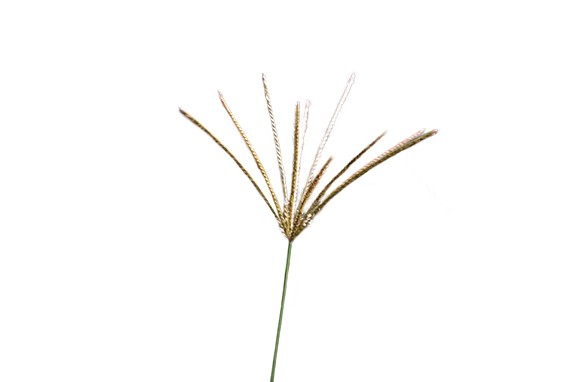 Professor Sally Power and her team at PACE were profiled in Western Sydney University's second edition of the Future Makers research magazine.
Professor Sally Power and her team at PACE were profiled in Western Sydney University's second edition of the Future Makers research magazine.
We are interested in how well pasture species perform when exposed to warmer, drier conditions, and understanding what biological characteristics influence species’ climate sensitivity", explains Sally.
Read about PACE in Future Makers Ed. 2
The PACE Experimental Planting Trials
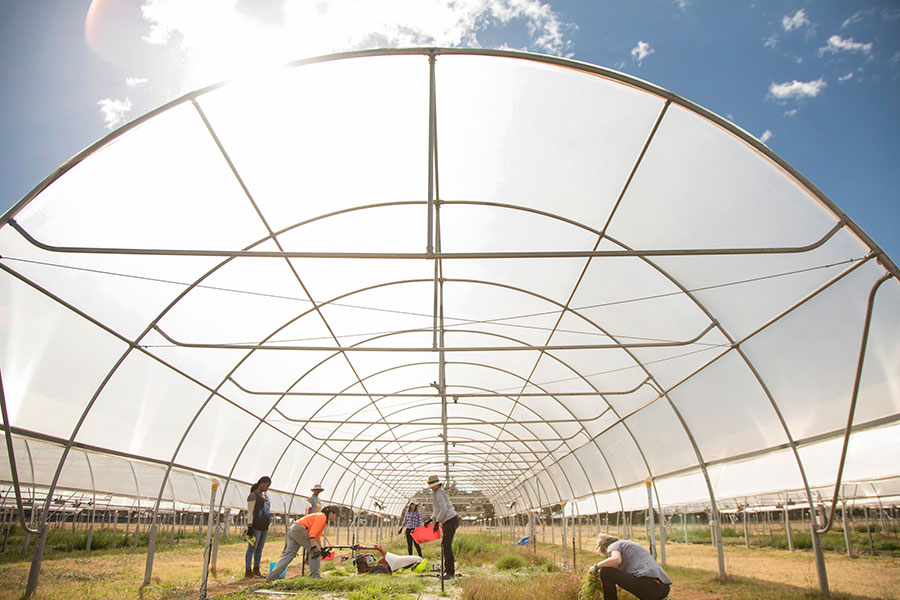
The polytunnels prevent natural rainfall from reaching the experimental plots so that we can apply rainfall according to exact scenarios.
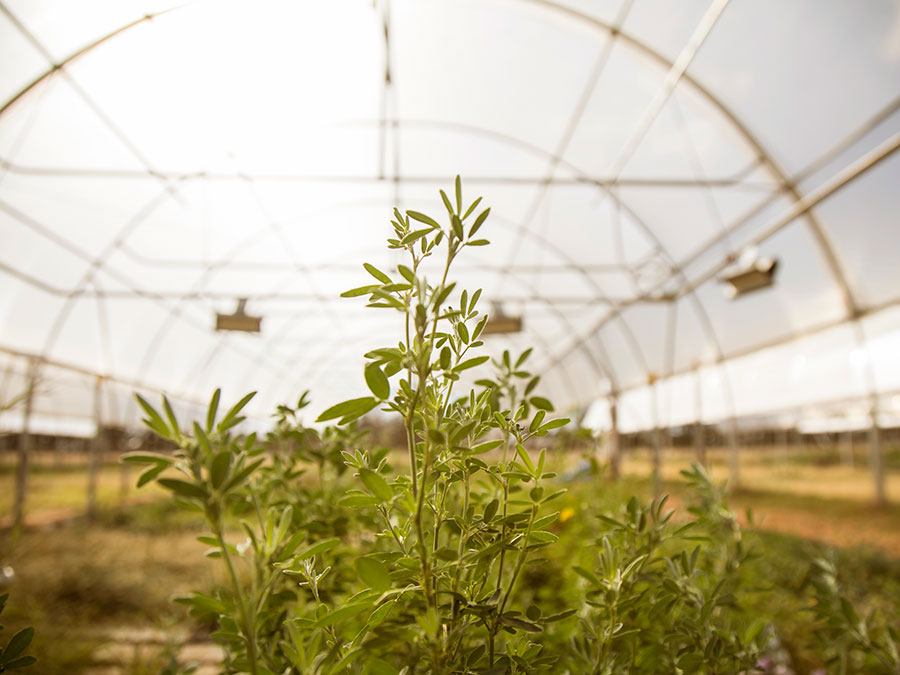
The experimental plots include Biserrula, lucerne, rye grass, Phalaris and a mix of other grasslands and grazing species.
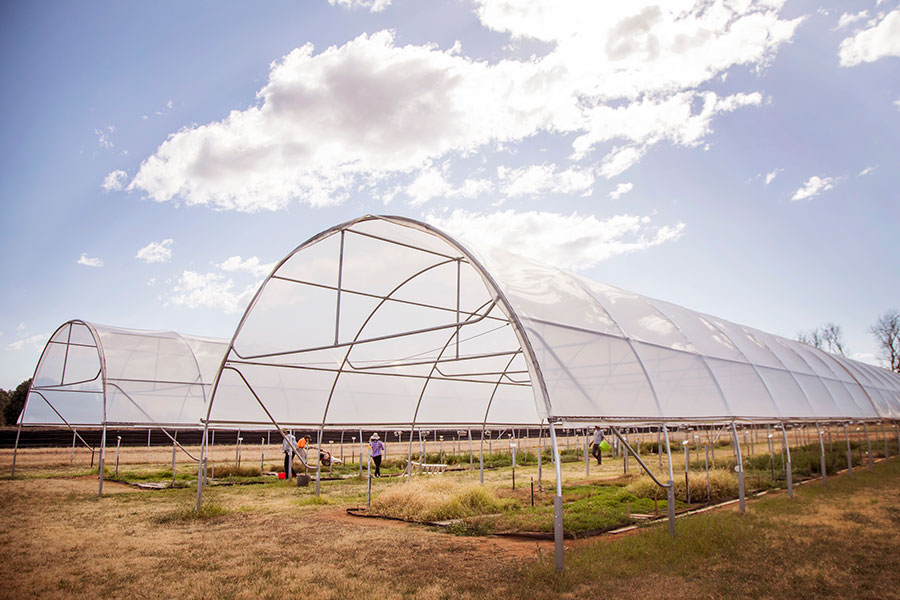
Biomass harvesting enables us to connect the water treatments with eventual yields so that we can estimate performance under future climates.
The PACE facility and research program is funded by Meat and Livestock Australia and Dairy Australia with co-investment from Western Sydney University.

